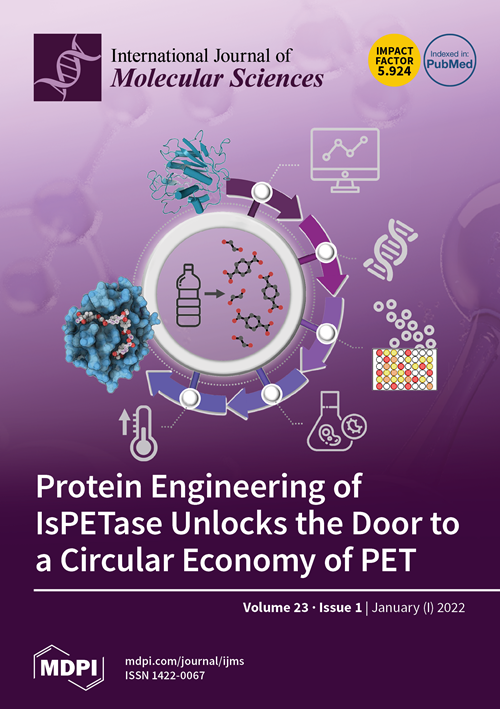Ferroptosis, Metabolic Rewiring, and Endometrial Cancer
IF 4.9
2区 生物学
Q1 BIOCHEMISTRY & MOLECULAR BIOLOGY
引用次数: 0
Abstract
Ferroptosis is a newly discovered form of regulated cell death. The main feature of ferroptosis is excessive membrane lipid peroxidation caused by iron-mediated chemical and enzymatic reactions. In normal cells, harmful lipid peroxides are neutralized by glutathione peroxidase 4 (GPX4). When GPX4 is inhibited, ferroptosis occurs. In mammalian cells, ferroptosis serves as a tumor suppression mechanism. Not surprisingly, in recent years, ferroptosis induction has gained attention as a potential anticancer strategy, alone or in combination with other conventional therapies. However, sensitivity to ferroptosis inducers depends on the metabolic state of the cell. Endometrial cancer (EC) is the sixth most common cancer in the world, with more than 66,000 new cases diagnosed every year. Out of all gynecological cancers, carcinogenesis of EC is mostly dependent on metabolic abnormalities. Changes in the uptake and catabolism of iron, lipids, glucose, and glutamine affect the redox capacity of EC cells and, consequently, their sensitivity to ferroptosis-inducing agents. In addition to this, in EC cells, ferroptosis-related genes are usually mutated and overexpressed, which makes ferroptosis a promising target for EC prediction, diagnosis, and therapy. However, for a successful application of ferroptosis, the connection between metabolic rewiring and ferroptosis in EC needs to be deciphered, which is the focus of this review.铁蛋白沉积、代谢重构与子宫内膜癌
铁中毒是一种新发现的调节性细胞死亡形式。铁变态反应的主要特征是由铁介导的化学和酶反应引起的膜脂质过氧化。在正常细胞中,有害的脂质过氧化物被谷胱甘肽过氧化物酶 4(GPX4)中和。当 GPX4 受到抑制时,就会发生铁变态反应。在哺乳动物细胞中,铁氧化是一种肿瘤抑制机制。近年来,诱导铁氧化作为一种潜在的抗癌策略,单独使用或与其他常规疗法结合使用,受到人们的关注,这并不奇怪。然而,对铁蛋白沉降诱导剂的敏感性取决于细胞的代谢状态。子宫内膜癌(EC)是全球第六大常见癌症,每年新确诊病例超过 66,000 例。在所有妇科癌症中,子宫内膜癌的发生主要取决于代谢异常。铁、脂质、葡萄糖和谷氨酰胺的摄取和分解变化会影响癌细胞的氧化还原能力,进而影响其对铁变态反应诱导剂的敏感性。此外,在心肌细胞中,与铁突变相关的基因通常会发生突变和过度表达,这使得铁突变成为心肌细胞预测、诊断和治疗的一个很有前景的靶点。然而,要成功应用铁蛋白沉积,还需要破译心肌细胞中代谢重构与铁蛋白沉积之间的联系,这也是本综述的重点。
本文章由计算机程序翻译,如有差异,请以英文原文为准。
求助全文
约1分钟内获得全文
求助全文
来源期刊

International Journal of Molecular Sciences
Chemistry-Organic Chemistry
CiteScore
8.10
自引率
10.70%
发文量
13472
审稿时长
17.49 days
期刊介绍:
The International Journal of Molecular Sciences (ISSN 1422-0067) provides an advanced forum for chemistry, molecular physics (chemical physics and physical chemistry) and molecular biology. It publishes research articles, reviews, communications and short notes. Our aim is to encourage scientists to publish their theoretical and experimental results in as much detail as possible. Therefore, there is no restriction on the length of the papers or the number of electronics supplementary files. For articles with computational results, the full experimental details must be provided so that the results can be reproduced. Electronic files regarding the full details of the calculation and experimental procedure, if unable to be published in a normal way, can be deposited as supplementary material (including animated pictures, videos, interactive Excel sheets, software executables and others).
 求助内容:
求助内容: 应助结果提醒方式:
应助结果提醒方式:


